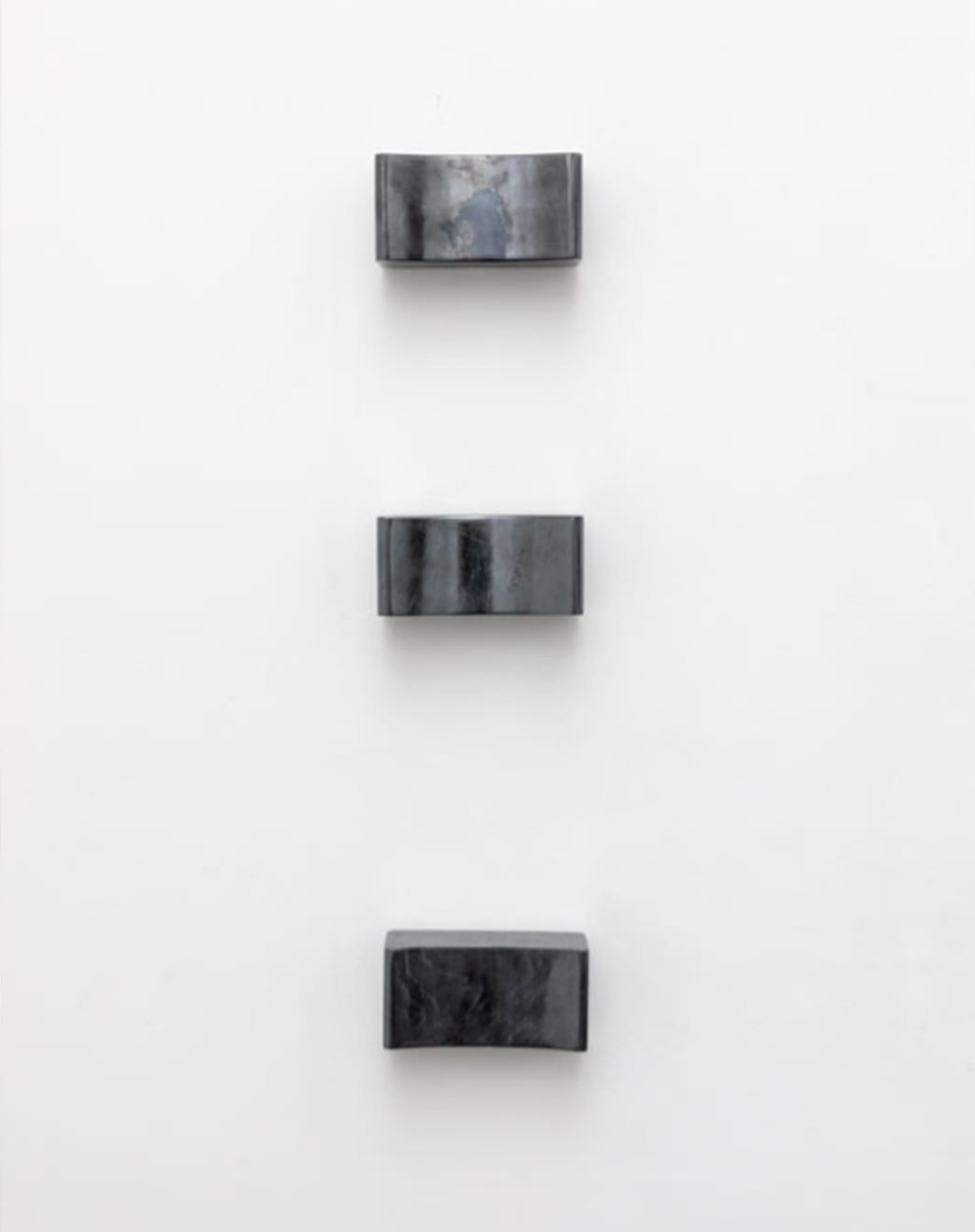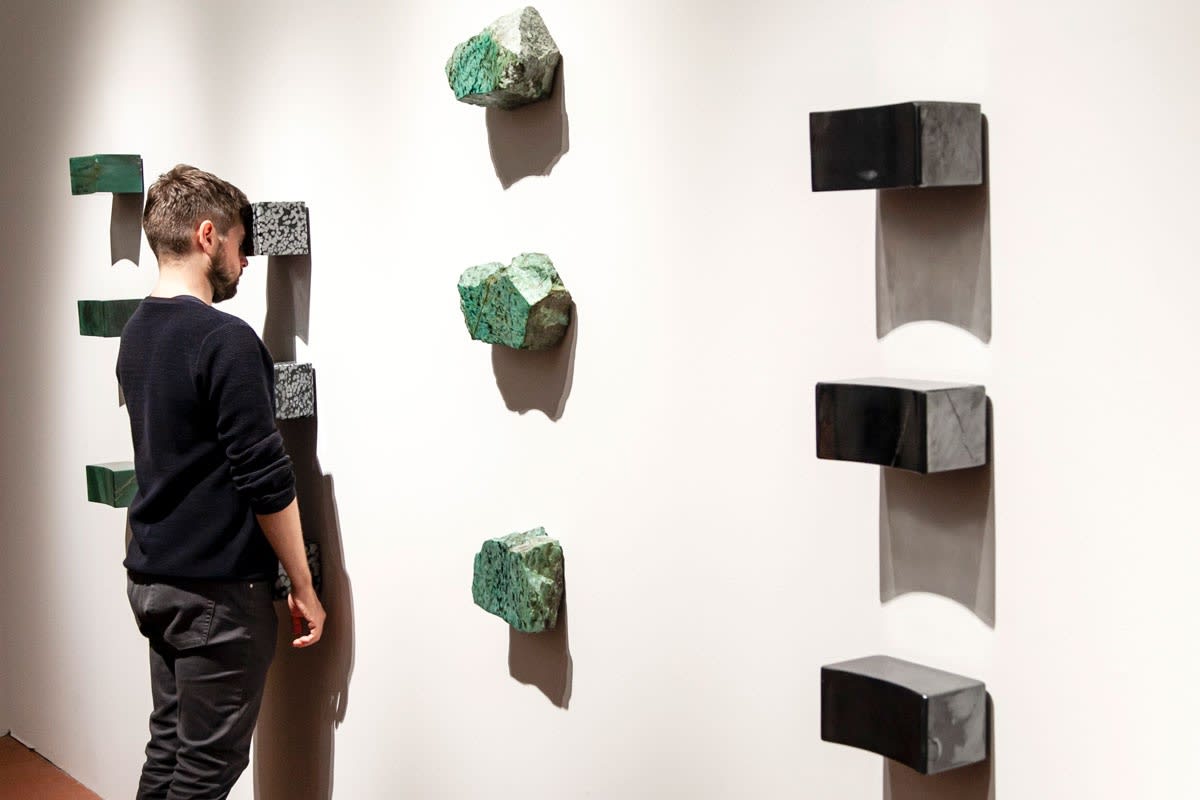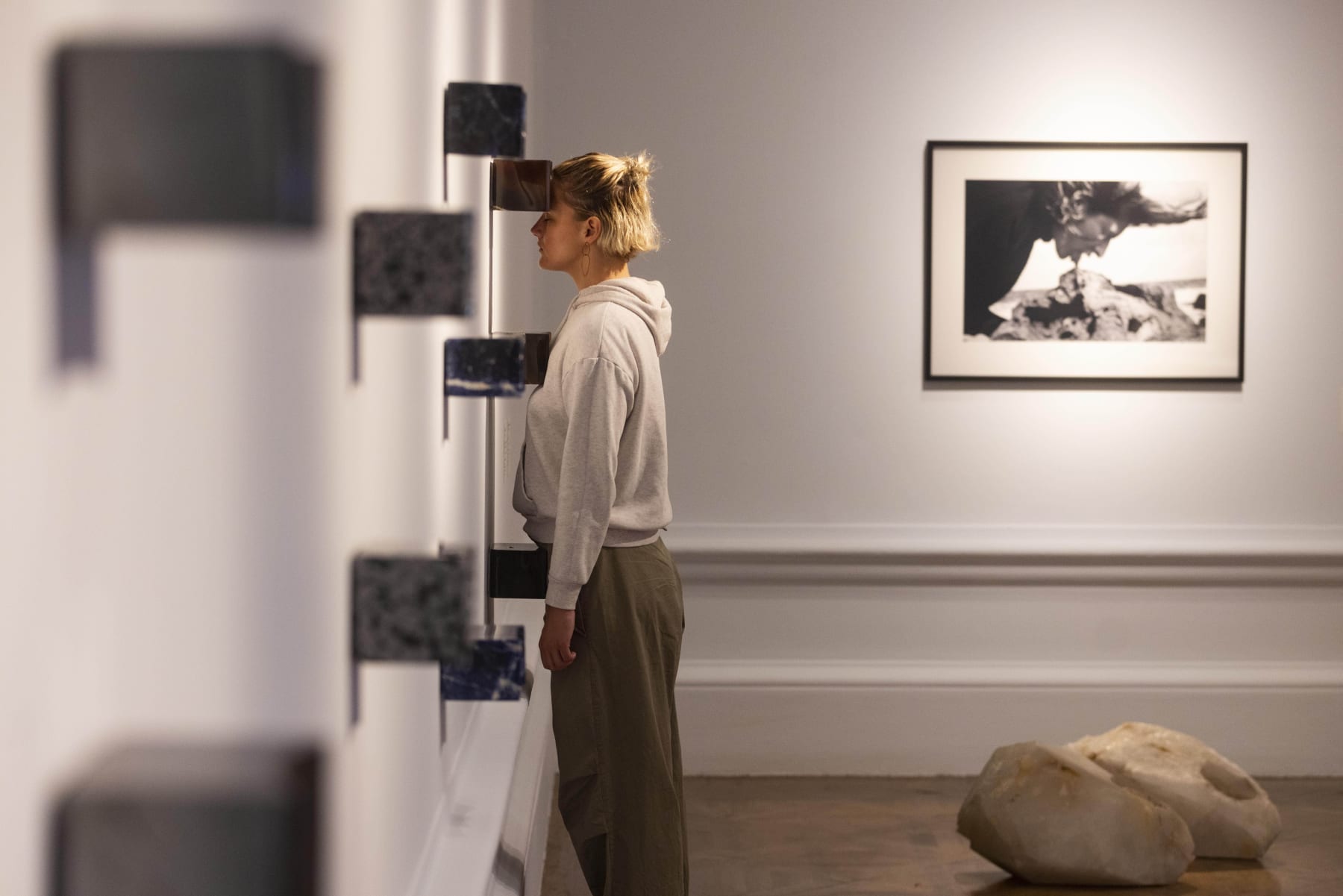-
Marina Abramovic
Black Dragon, 1994hematita, suporte de metal e placa de acrílico
hematite, metal brackets, Lucite plaque87 x 19 x 12 cm
34.25 x 7.5 x 4.75 inFurther images
Marina Abramovic became known worldwide for her research in performance art, which as early as the 1960s presented artistic experiences involving the discussion about the limits of the body and the mind, along with a direct relationship between the artist and the public. From the 1980s onward, the artist began to investigate the subjects related to spirituality and religious syncretism, as well as the potentials of the mind, body and spirit, through a connection with nature and the sacred. This investigation took on even greater importance in the artist’s work after her first visit to Brazil, in 1989, when she gained experiences that provided rich material for the production of photographs, videos, sculptures and installations.Marina Abramovic became known worldwide for her research in performance art, which as early as the 1960s presented artistic experiences involving the discussion about the limits of the body and the mind, along with a direct relationship between the artist and the public. From the 1980s onward, the artist began to investigate the subjects related to spirituality and religious syncretism, as well as the potentials of the mind, body and spirit, through a connection with nature and the sacred. This investigation took on even greater importance in the artist’s work after her first visit to Brazil, in 1989, when she gained experiences that provided rich material for the production of photographs, videos, sculptures and installations.Marina Abramovic graduated from the Academy of Fine Arts (Belgrade, 1970), the Academy of Fine Arts (Zagreb, 1972) and from the Art Institute of Chicago (2005). She is a cofounder of the Marina Abramovic Institute (MAI), in New York, a platform for immaterial art and long-duration performances. Her first solo show was held in 1964 at the Workers’ University, in Belgrade; since then, she has presented dozens of solo shows at institutions such as Royal Academy of Arts (UK), MoMA (USA), Guggenheim Museum (USA), Serpentine Galleries (UK), MoMA PS1 (USA), the Museo Nacional Centro de Arte Reina Sofía (Spain), Neue Nationalgalerie (Germany), the Centre Georges Pompidou (France), Stedelijk Museum (Netherlands), the Fundação Calouste Gulbenkian (Portugal), Sesc Pompeia (Brazil), and others. Abramovic has participated in countless group shows, most notably the 45th (1993) and the 47th (1997) editions of the Venice Biennale (winning the Golden Lion Award for Best Artist); dOCUMENTA (13), documenta IX, documenta 8 and documenta 6 (2012, 1992, 1988 and 1977); the 28th, 18th and 16th editions of the Bienal de São Paulo (2008, 1985 and 1981); the 5th and the 13th Bienal do Mercosul (2007); and the 7th Bienal de la Habana (2000). Marina Abramovic also performs the play "7 Deaths of Maria Callas", since 2020 roaming different countries. Her artworks figure in many prominent public and private collections, including those of Cisneros Fontanals Art Foundation, Miami (USA), the Kunstmuseum (Switzerland), Museum Ludwig (Germany), the San Francisco Museum of Modern Art (USA), the Solomon R. Guggenheim Museum (USA), and the Museum of Modern Art (MoMA), New York (USA).Marina Abramovic ficou mundialmente conhecida por sua pesquisa na arte da performance, que introduziu na experiência artística, ainda na década de 1960, a discussão sobre os limites do corpo e da mente, além da relação direta entre o artista e o público. A partir da década 1980, a artista passou a investigar os assuntos relacionados à espiritualidade e ao sincretismo religioso, além dos potenciais da mente, do corpo e do espírito, através da conexão com a natureza e o sagrado. Essa investigação ganha ainda mais importância na obra da artista depois de sua primeira visita ao Brasil, em 1989. Essas experiências compõem um rico material para produção de fotografias, vídeos, esculturas e instalações.
Marina Abramovic é formada pela Academy of Fine Arts (Belgrado, 1970), Academy of Fine Arts (Zagreb, 1972) e pelo The Art Institute of Chicago (2005). Marina Abramovic é fundadora do MAI – Marina Abramovic Institute, em Nova York, uma plataforma para arte imaterial e performances de longa duração. Sua primeira exposição individual foi realizada em 1964 na Workers’ University, em Belgrado; desde então, apresentou dezenas mostras individuais em instituições como Royal Academy of Arts (Inglaterra), MoMA (EUA), Guggenheim Museum (EUA), Serpentine Galleries (Inglaterra), MoMA PS1 (EUA), Museo Nacional Centro de Arte Reina Sofia (Espanha), Neue Nationalgalerie (Alemanha), Centre Georges Pompidou (França), Stedelijk Museum (Holanda), Fundação Calouste Gulbenkian (Portugal), Sesc Pompeia (Brasil), entre muitos outros. Marina Abramovic participou de inúmeras mostras coletivas, com destaque para a 45ª (1993) e a 47ª Bienal de Veneza (1997) – quando ganhou o Leão de Ouro de Melhor Artista; Documenta 13, 9, 8 e 6 (2012, 1992, 1988 e 1977); as 28ª, 18ª e 16ª edições da Bienal de São Paulo (2008, 1985 e 1981); 5ª e 13a Bienal do Mercosul (2007 e 2022); e 7ª Bienal de la Habana (2000). Desde 2020, Marina Abramovic realiza itinerância com a peça "7 Deaths of Maria Callas", sobre o legado da cantora greco-americana. Suas obras encontram-se nas principais coleções públicas e privadas, como Cisneros Fontanals Art Foundation, Miami (EUA), Kunstmuseum (Suíça), Museum Ludwig (Alemanha), San Francisco Museum of Modern Art (EUA), Solomon R. Guggenheim Museum (EUA), The Museum of Modern Art, New York – MoMA (EUA), etc.





